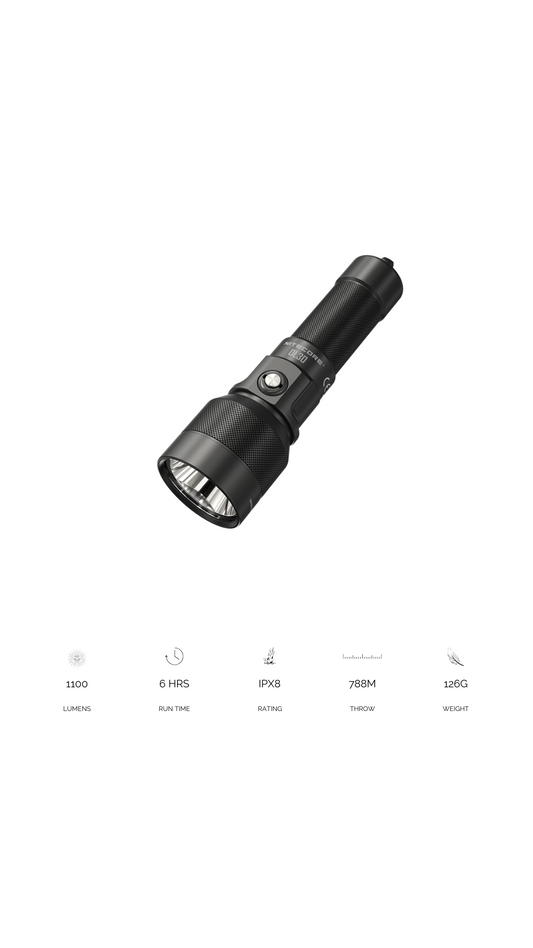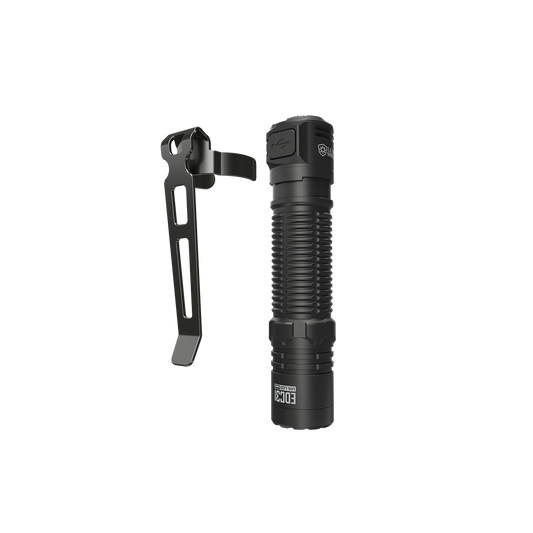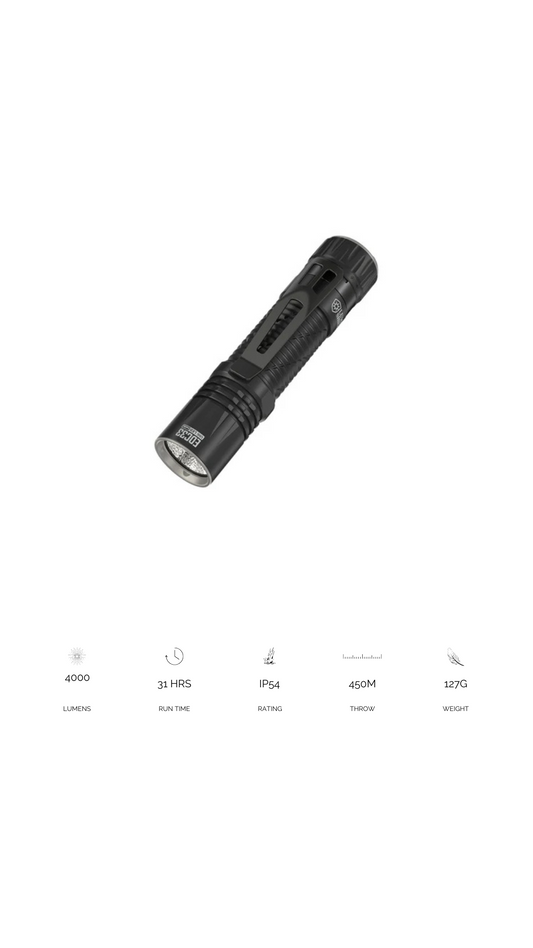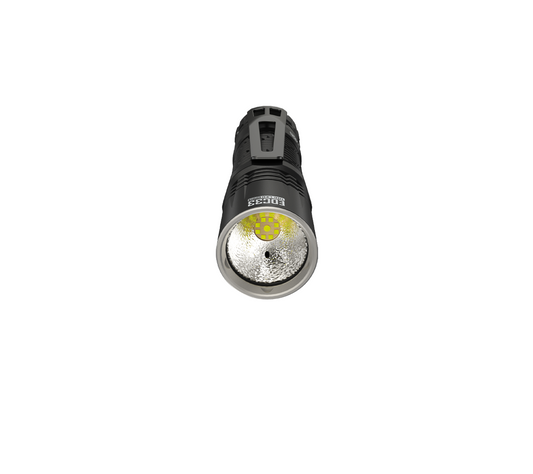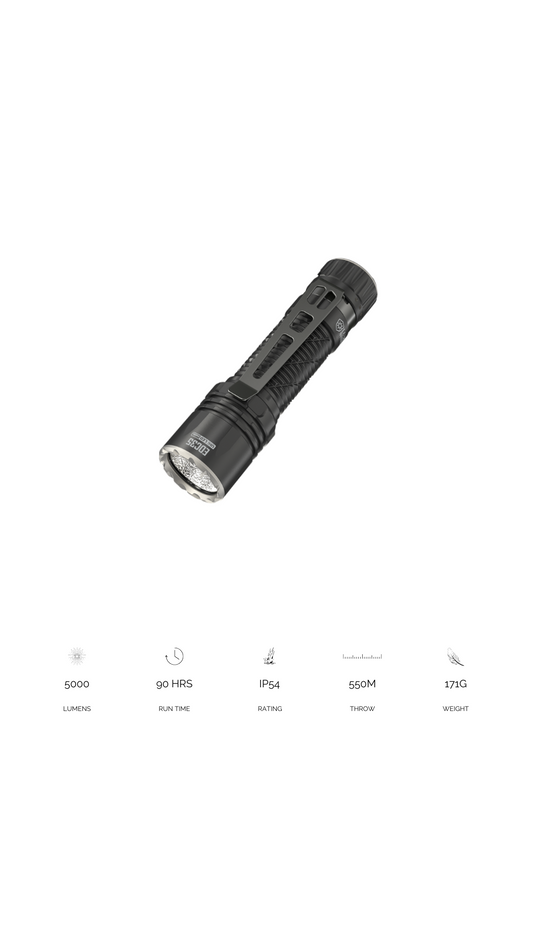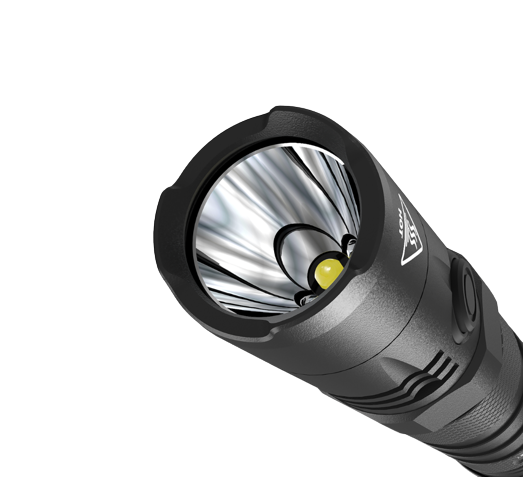
Staying Sharp: Optimizing VO₂ max and Fitness for Men Over 40
Staying Sharp: Optimizing VO₂ max and Fitness for Men Over 40
As men step over the threshold of 40, a subtle shift in physical capabilities often becomes apparent. That extra burst of speed during a friendly game feels strained, and stairs transform into mini-Everests. While these changes are a natural consequence of aging, they don't have to define your fitness journey. Here, we delve into VO₂ max, a key metric of cardiorespiratory fitness, and explore strategies to improve it – and your overall well-being – as you age.
Understanding VO₂ max: The Engine of Endurance Explained
VO₂ max, short for maximum volume of oxygen, is a vital metric that reflects your body's ability to utilize oxygen during exercise. Imagine it as the engine's capacity for fuel intake. The higher your VO₂ max, the more oxygen your body can transport and deliver to your working muscles. This translates to several key benefits:
- Enhanced Endurance: With a greater oxygen supply, your muscles can sustain activity for longer durations before fatigue sets in. You'll be able to run farther, cycle harder, and push through those challenging workouts without feeling winded.
- Faster Recovery: After exercise, your body needs to replenish oxygen stores and remove waste products. A higher VO₂ max means this recovery process happens more efficiently, allowing you to bounce back from workouts quicker and be ready to tackle the next one.
- Stronger Heart: During exercise, your heart works harder to pump oxygen-rich blood throughout your body. A higher VO₂ max often signifies a more efficient and robust heart, reducing your risk of cardiovascular diseases.
The Breakdown: How VO₂ max Works
Let's delve deeper into the physiological processes behind VO₂ max:
- Respiration: When you breathe, air enters your lungs. Oxygen from the air diffuses into your bloodstream through tiny air sacs called alveoli.
- Transportation: Oxygen binds to hemoglobin, a protein in red blood cells, and travels through your circulatory system.
- Delivery: Oxygen-rich blood reaches your working muscles, where it's essential for energy production.
- Utilization: Oxygen combines with glucose (sugar) in the muscles to generate ATP (adenosine triphosphate), the primary fuel for cellular processes during exercise.
Factors Affecting VO₂ max.
Several factors influence your VO₂ max, including:
- Muscle Mass: As mentioned earlier, muscles are the primary consumers of oxygen. The more muscle mass you have, the higher your potential VO₂ max.
- Lung Capacity: Your lungs' ability to take in oxygen significantly impacts your VO₂ max. Conditions like chronic obstructive pulmonary disease (COPD) can reduce lung capacity and lower VO₂ max.
- Cardiovascular Health: The efficiency of your heart in pumping blood also plays a role. A stronger heart can deliver oxygen-rich blood more effectively, boosting VO₂ max.
- Genetics: Some individuals are genetically predisposed to higher VO₂ max potential.
Understanding VO₂ max Doesn’t Tell the Whole Story
While VO₂ max is a valuable tool for assessing cardiorespiratory fitness, it's not the only measure. Other factors like your training experience, technique, and even mental state can influence your performance during exercise. However, focusing on improving VO₂ max through exercise strategies can lead to overall fitness improvements and a healthier you.

The Downward Slide: Why VO₂ max Declines with Age
For many of us, the years around 40 usher in a new reality when it comes to our bodies. That once-effortless burst of speed during a pick-up game feels like a struggle; conquering a flight of stairs becomes a mini-Everest trek, and bouncing back from workouts seems to take forever. These are all natural consequences of aging, and a significant culprit behind this decline is a drop in VO₂ max. But what exactly is VO₂ max, and why does it decrease with age? Let's delve into the three main reasons why our fitness engine sputters a bit after 40.
- Muscle Mass Matters (Sarcopenia)
Muscle mass is the body's primary consumer of oxygen. As we age, a condition called sarcopenia sets in, leading to a gradual decrease in muscle tissue. This loss of muscle mass directly impacts VO₂ max because fewer oxygen-hungry cells demand oxygen for energy production. Imagine a factory with fewer machines running—the overall oxygen demand naturally decreases.
Several factors contribute to sarcopenia:
- Decreased Protein Synthesis: The body's ability to produce new muscle protein slows down with age.
- Reduced Hormonal Activity: Hormones like testosterone and growth hormone, which play a role in muscle building, decline with age.
- Lower Activity Levels: As we age, we often become less active, further accelerating muscle loss.
- Lung Capacity Takes a Dip (Lung Volume Decline)
Our lungs are responsible for taking in oxygen from the air. Unfortunately, lung function also declines with age. This condition, known as lung volume decline, reduces the amount of air our lungs can hold and the efficiency with which they extract oxygen from the air. This limited oxygen intake capacity translates to a lower VO₂ max.
Factors affecting lung volume decline include:
- Loss of Elasticity: The tissues in our lungs become less elastic with age, making it harder for them to expand and contract fully during breathing.
- Stiffening of the Chest Wall: The muscles and tissues of the chest wall can stiffen with age, limiting lung expansion.
- Previous Lung Conditions: Existing lung conditions like asthma or chronic obstructive pulmonary disease (COPD) can further exacerbate the decline in lung function.
- The Heart's Pumping Power Subtly Decreases (Cardiac Remodeling)
The heart is the engine that pumps oxygen-rich blood throughout the body. With age, a process called cardiac remodeling can occur. This remodeling involves changes in the heart's structure and function, including:
- Thicker Heart Walls: The muscular walls of the heart may thicken, making it less efficient at pumping blood.
- Reduced Stroke Volume: The amount of blood pumped out by the heart with each beat (stroke volume) can decrease.
- Less Flexible Valves: The heart valves may become less flexible, hindering blood flow.
These changes in cardiac function can decrease the heart's ability to deliver oxygenated blood to the muscles, ultimately impacting VO₂ max.
It's Important to Note:
The rate of decline in VO₂ max varies from person to person. Genetics, overall health, and activity levels all play a role. The good news is that even with these age-related changes, you can still improve your VO₂ max through exercise and a healthy lifestyle.
So, how does the decline in VO₂ max relate to deterioration in health?
A decline in VO₂ max is intricately linked to deterioration in health in several ways. Here's a breakdown of the key connections:
Reduced Endurance and Exercise Capacity:
- A lower VO₂ max means your body has a diminished capacity to utilize oxygen during exercise. This translates to a decrease in stamina and endurance. You'll tire faster during activities you once found manageable, like climbing stairs, going for a brisk walk, or participating in recreational sports.
- This reduced exercise capacity can lead to a more sedentary lifestyle, further accelerating health decline.
Increased Risk of Chronic Diseases:
- A lower VO₂ max is associated with an increased risk of developing chronic diseases like:
- Heart Disease: A strong heart is essential for delivering oxygen-rich blood throughout the body. A decline in VO₂ max can put a strain on the heart, increasing the risk of heart disease.
- Type 2 Diabetes: Muscles play a key role in regulating blood sugar levels. Reduced muscle mass associated with lower VO₂ max can contribute to insulin resistance, a precursor to type 2 diabetes.
- Metabolic Syndrome: This cluster of conditions, including high blood pressure, high blood sugar, and unhealthy cholesterol levels, is linked to a lower VO₂ max.
Weakened Immune System:
- Regular exercise, particularly moderate-intensity cardio, strengthens the immune system. A decline in VO₂ max often leads to a decrease in exercise frequency and intensity, potentially weakening the immune system and making you more susceptible to infections.
Overall Functional Decline:
- As VO₂ max decreases, daily activities like carrying groceries, climbing stairs, or even walking become more challenging. This functional decline can impact your independence and quality of life.
It's Important to Note:
The decline in VO₂ max is just one piece of the puzzle when it comes to health. However, it serves as a valuable indicator of your overall cardiovascular health and fitness level. By working to improve your VO₂ max through exercise and a healthy lifestyle, you can not only boost your endurance and performance but also reduce your risk of chronic diseases and maintain your functional independence for longer.
A Glimpse into the Numbers: VO₂ max Chart
Here's a table showing average VO₂ max ranges for men by age group. It provides a general benchmark, but remember, VO₂ max is an individual measure. Genetics, training history, and overall health can all influence your score.
|
Age Group (Years) |
Excellent (ml/kg/min) |
Good (ml/kg/min) |
Above Average (ml/kg/min) |
Average (ml/kg/min) |
Below Average (ml/kg/min) |
Poor (ml/kg/min) |
|
20-29 |
>60 |
52-60 |
46-51 |
40-45 |
35-39 |
<35 |
|
30-39 |
>56 |
49-56 |
43-48 |
39-42 |
34-38 |
<34 |
|
40-49 |
>51 |
45-51 |
39-44 |
36-38 |
32-35 |
<32 |
|
50-59 |
>45 |
40-45 |
34-39 |
31-33 |
28-30 |
<28 |
|
60-69 |
>41 |
37-41 |
32-36 |
29-31 |
26-28 |
<26 |
Reversing the Trend: Strategies to Boost Your VO₂ max Even After 40
While VO₂ max naturally declines with age due to factors like muscle loss, reduced lung capacity, and changes in heart function, the good news is it's not set in stone. By incorporating specific training methods into your routine, you can reignite your fitness engine and elevate your VO₂ max even after 40. Here's a deeper dive into the key strategies mentioned earlier:
- Embrace Cardio, the Cornerstone of Endurance:
Regular aerobic exercise forms the foundation for a healthy VO₂ max. It trains your body to utilize oxygen more efficiently and improves your cardiovascular system's ability to deliver oxygen to your muscles. Aim for at least 150 minutes of moderate-intensity cardio (brisk walking, swimming) or 75 minutes of vigorous-intensity exercise (running, cycling) per week. Consistency is key. Find activities you enjoy and stick with them. Here are some ideas to keep things interesting:
- Interval Training: Incorporate short bursts of high-intensity exercise (think sprints) interspersed with recovery periods. Studies show this is particularly effective for boosting VO₂ max.
- Group Fitness Classes: The social aspect and guidance from instructors can add motivation and variety to your workouts.
- Outdoor Activities: Take your cardio outdoors with activities like hiking, cycling, or swimming. Nature provides a scenic backdrop and a mental boost.
- Unleash the Power of High-Intensity Interval Training (HIIT):
HIIT is your secret weapon for boosting VO₂ max. It involves alternating periods of intense activity (think sprints uphill, fast-paced swimming laps) with short rest intervals. These quick bursts challenge your cardiovascular system, forcing it to adapt and become more efficient at oxygen utilization. Here's how to incorporate HIIT safely and effectively:
- Start Slow: Begin with shorter intervals (think 30 seconds) and gradually increase the duration and intensity as your fitness improves.
- Listen to Your Body: Pay attention to your body's cues. Take rest days when needed, and don't push yourself to the point of pain.
- Find Your Intensity: The key to HIIT is working at a high-intensity level during the work intervals. This can be anything from feeling very hard to breathe to reaching 80-90% of your maximum heart rate.
- Warm-up and Cool-down: To allow your body to recover, don't skip a proper warm-up before your HIIT session and a cool-down afterward.
- Don't Neglect Strength Training:
Building muscle mass is crucial for improving VO₂ max. More muscle translates to more oxygen-requiring cells, which in turn elevates your VO₂ max. Focus on compound exercises that work for multiple muscle groups simultaneously, such as:
- Squats
- Lunges
- Push-ups
- Rows
- Deadlifts
Strength training not only improves VO₂ max but also enhances bone density and overall strength, reducing your risk of injuries. Here are some additional tips for strength training:
- Consider working with a trainer: Especially for beginners, a trainer can ensure proper form to maximize results and minimize the risk of injury.
- Start with lighter weights and gradually increase: As you get stronger, gradually increase the weight you lift to keep challenging your muscles.
- Focus on proper form: This is crucial to prevent injuries and ensure you're targeting the intended muscle groups.
- Listen to Your Body:
While pushing yourself is important for improvement, it's equally crucial to listen to your body's cues. Here are some tips:
- Increase intensity and duration gradually: Don't try to do too much too soon to avoid injuries.
- Rest days are essential: Recovery is when your body adapts and gets stronger. Schedule rest days into your workout routine.
- Pay attention to pain: If you experience any sharp or persistent pain, stop the activity, and consult your doctor.
Remember: Consistency is key. By incorporating these strategies and embracing an active lifestyle, you can turn back the clock on your fitness and reclaim the vitality you deserve. So, lace up your shoes, hit the gym, or explore the outdoors, and start rekindling your fitness engine!

Can’t Run as it wrecks your knees?
Try adding swimming to your overall regime.
Swimming is a fantastic exercise for improving VO₂ max for several reasons:
- Large Muscle Group Engagement: Unlike some exercises that target isolated muscle groups, swimming utilizes a large range of muscles throughout your body. This includes your legs, core, back, shoulders, and arms. More muscle mass working translates to a greater demand for oxygen, pushing your body to become more efficient at oxygen utilization, ultimately improving VO₂ max.
- Cardiovascular Challenge: Swimming elevates your heart rate and keeps it sustained throughout your workout. This consistent cardiovascular stress strengthens your heart muscle and improves its ability to pump blood efficiently, delivering more oxygen to your working muscles.
- Low-Impact Exercise: One of the biggest advantages of swimming for VO₂ max improvement is its low-impact nature. Unlike running or high-impact exercises, swimming puts minimal stress on your joints, making it suitable for people of all ages and fitness levels. This allows you to push yourself harder for longer durations without the risk of injury, maximizing the benefits for your VO₂ max.
- Improved Lung Capacity: While swimming doesn't directly involve lifting weights, the act of controlled breathing during laps can strengthen your respiratory muscles. This can lead to a slight increase in lung capacity, allowing you to take in more oxygen with each breath, further enhancing your VO₂ max potential.
Additional Considerations:
- Intensity Matters: Like any exercise, the intensity of your swim workout plays a crucial role in VO₂ max improvement. While a leisurely poolside float is enjoyable, it won't do much for your VO₂ max. Focus on incorporating interval training techniques like alternating between freestyle laps and faster backstroke sets or timed swims with short rest periods.
- Technique is Key: Proper swim technique ensures you're working the intended muscle groups efficiently and maximizing the oxygen demand on your body. Consider taking a few lessons from a swim coach to refine your stroke and get the most out of your swimming workouts.
Adding swimming to your running routine can be a great way to improve your VO₂ max for several reasons:
Complementary Training:
- Reduced Impact, Increased Intensity: Running is a high-impact exercise that can put stress on your joints. Swimming offers a low-impact alternative, allowing you to maintain or even increase your overall training intensity without the added wear and tear. This can be particularly beneficial for runners prone to overuse injuries. By incorporating swim workouts, you can maintain your fitness level and potentially push yourself harder during swim sessions, ultimately leading to VO₂ max improvement.
- Engages Different Muscle Groups: Running primarily targets your lower body muscles. Swimming, on the other hand, engages a wider range of muscles, including your core, back, shoulders, and arms. This broader muscle recruitment increases your overall oxygen demand, stimulating your body to adapt and become more efficient at oxygen utilization, leading to a potential VO₂ max increase.
Improved Overall Fitness:
- Cardiovascular Benefits: Both running and swimming are excellent cardiovascular exercises. Adding swimming to your routine provides additional stress on your heart, strengthening it and improving its ability to pump blood efficiently. This translates to better oxygen delivery to your muscles during all activities, including running, further enhancing your VO₂ max potential.
Considerations to Maximize Benefits:
- Planning and Variety: To optimize VO₂ max gains, plan your running and swimming workouts strategically. Alternate high-intensity running days with recovery swims or incorporate swim sessions focused on drills and technique improvement in between hard runs. This variety keeps your workouts stimulating and helps prevent plateaus.
- Intensity Matters: While swimming offers low-impact benefits, ensure your swim workouts are challenging enough to elevate your heart rate and push your cardiovascular system. Include interval training techniques or timed swims with short rest periods to maximize the VO₂ max benefits.
The Overall Advantage:
The combined benefits of improved cardiovascular health, reduced running-related stress on your joints, and engaging a wider range of muscles all contribute to a more well-rounded fitness base. This translates to a better foundation for running performance and potentially even indirect improvements in your VO₂ max over time.
Additional Tips:
- Listen to Your Body: Pay attention to any pain or discomfort. Don't hesitate to adjust your training plan or seek professional guidance from a coach or trainer to ensure you're reaping the benefits without risking injury.
- Focus on Technique: Proper form is crucial in both running and swimming to maximize benefits and minimize injury risk. Consider consulting a running coach or swim instructor to refine your technique in both disciplines.
By incorporating swimming strategically into your running routine, you can create a well-rounded training program that improves your overall fitness, reduces injury risk, and potentially leads to improvements in your VO₂ max, ultimately enhancing your running performance.
Taking the First Step: Getting Started Safely and Effectively
Before you lace up your shoes and dive headfirst into a new routine, it's crucial to prioritize your safety and maximize your chances of success. Here are some key steps to take before you embark on your VO2Max-boosting journey:
1. Consult Your Doctor: Schedule a checkup with your doctor. They can assess your overall health, discuss any existing medical conditions, and advise on an exercise program tailored to your needs and limitations. This personalized approach ensures a safe and effective training plan that aligns with your current physical condition.
2. Find Your Baseline: Consider getting a baseline VO2Max test (if medically appropriate). While not essential, knowing your starting point can be a valuable motivational tool. Some gyms or fitness centers offer VO2Max testing, or you can explore wearable fitness trackers or smartwatches that estimate VO2Max. Remember, these estimates are not always precise, but they can still provide a general idea of your current fitness level and track your progress over time.
3. Start Slow and Gradually Increase Intensity: Don't try to go from couch potato to marathon runner overnight. Begin with low-intensity exercises and gradually increase the duration and intensity of your workouts as your fitness improves. This gradual approach allows your body to adapt to the increased physical demands and minimizes the risk of injuries.
4. Prioritize Proper Form: Whether you're hitting the gym or pounding the pavement, proper exercise form is paramount. Consider working with a certified personal trainer or coach, especially for beginners. They can guide you on proper technique for different exercises, ensuring you target the intended muscle groups effectively and minimize the risk of injury.
5. Embrace Consistency: Consistency is the golden rule for fitness success. Aim for regular exercise sessions, even if they're shorter in duration. It's better to stick with a consistent routine of moderate-intensity workouts than sporadically push yourself with high-intensity sessions that leave you burnt out and likely to quit.
Remember: By taking these steps, you'll be setting yourself up for a safe, enjoyable, and ultimately successful journey towards a higher VO2Max and a more vibrant you! So, with a doctor's clearance, a baseline understanding (optional), a slow and steady approach, proper form, and a commitment to consistency, you're ready to lace up your shoes and reclaim your fitness!



















